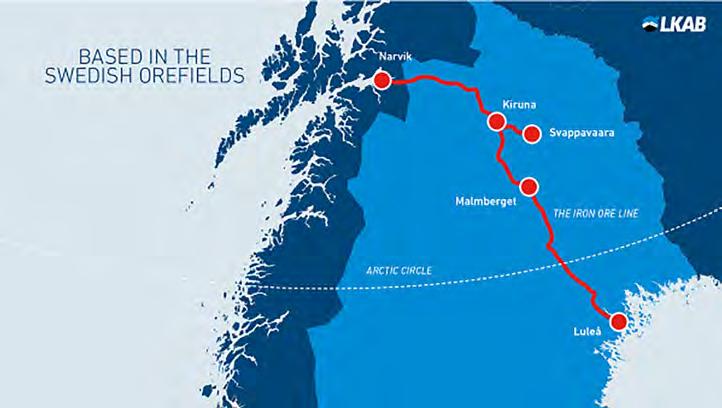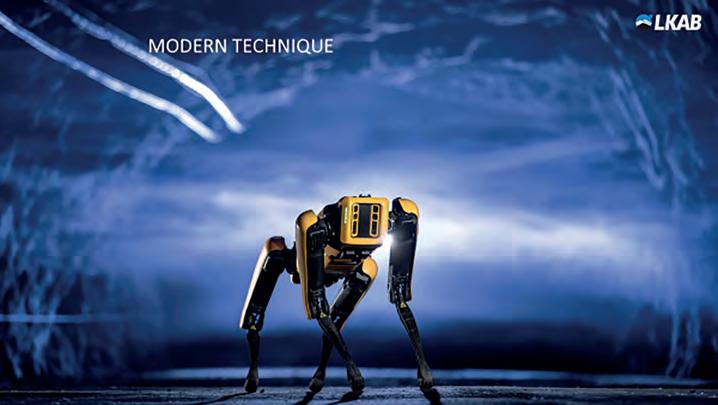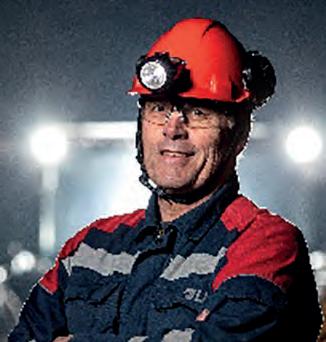
9 minute read
LKAB’s transformation and progress in the Sustainable Underground Mining Project
by 4SMNI
by Mike Lowther, Test-Mine Manager and Tina Benson,
General Manager Corporate Communications
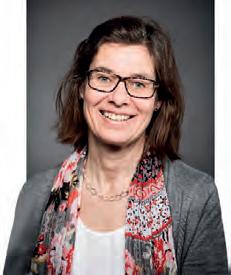
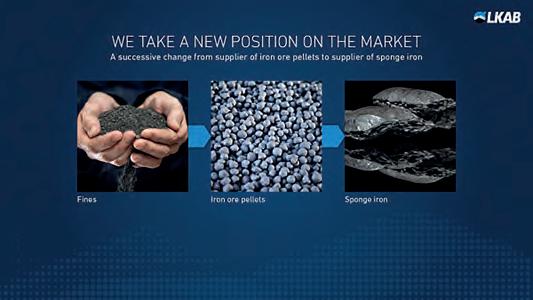
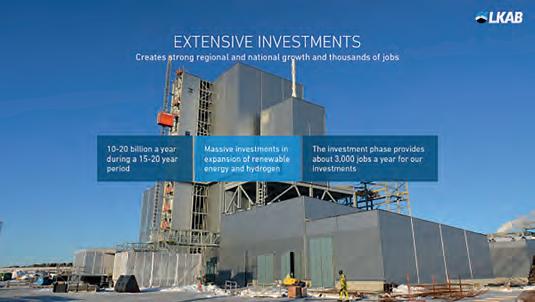
LKAB’S TRANSFORMATION
In November 2020 LKAB published its plan for the largest transformation in the company’s history. Over the coming decades LKAB will change from supplying iron ore pellets to the steel industry to being a supplier of carbon dioxide-free sponge iron using hydrogen technology.
This will have a major positive effect by reducing carbon dioxide emissions corresponding to two-thirds of Sweden’s total carbon dioxide emissions. It will also lead and inspire the urgently required transformation of the iron and steel industry, which is currently responsible for 7% of all carbon dioxide emissions globally. There will be big changes in three major areas: • We will develop a new world standard for mining at great depths • Carbon dioxide-free sponge iron will replace iron ore pellets as our main product • We will extract critical minerals such as
Rare Earth Elements and phosphorus from our mine waste The transformation requires a massive investment, and this in turn will create thousands of new jobs. Norrbotten, the most northern county in Sweden will become the hub for the sustainable development of the iron and steel industry.
Testing of the 40m SLC stopes has begun in the southern part of 436L.
3-D image of the Konsuln test-mine. Note the old ‘cork-screw’ decline (shown in light blue) and the old mined-out levels (shown in grey). The new figure-of-eight ramp (shown in light blue) provides access to the new mining levels (shown in orange). THE SUSTAINABLE UNDERGROUND MINING PROJECT
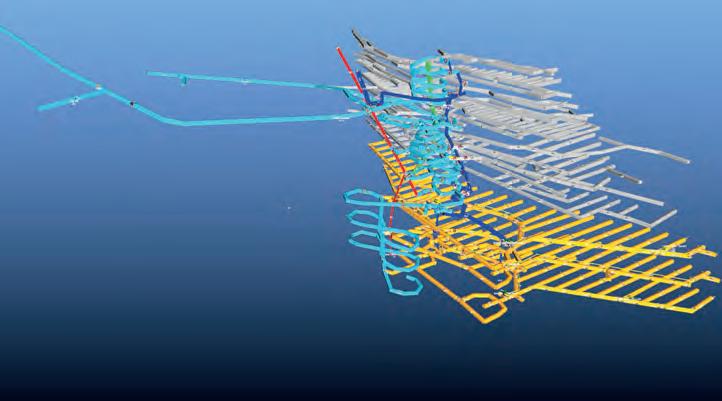
As part of the huge transformation described above, a major mining development project was initiated in 2018. This brings together LKAB, ABB, Epiroc, Combitech and Sandvik in a unique collaboration that utilises the combined engineering and human resources of five of Sweden’s biggest companies. The mine of the future will be carbondioxide-free, digitalized and autonomous. Reaching that goal will demand a new type of collaboration, a digital ecosystem in which the partners’ digital systems and operations are linked. After 2030 LKAB must be ready to mine at greater depths in the Kiruna and Malmberget mines. For this, decisions will have to be taken in the mid-2020s. The sustainable mine of the future requires new control systems, new and improved mining equipment, as well as complex and efficient management systems that meet future demands for a sustainable industry. Work in year 3 of the project (mid-2020 to mid-2021) has concentrated on moving the test-mine at Konsuln into production; ordering Battery Electric Vehicles from Epiroc and Sandvik; developing the Konsuln mine offices with a Mine Operations Control facility and a Virtual Mine Laboratory; testing connectivity, communications and positioning systems; testing Epiroc and Sandvik LHDs automation systems in the main Kiruna mine; helping to develop mine planning systems and further building and strengthening the project team.

Epiroc MT42 Battery (Photo Epiroc).
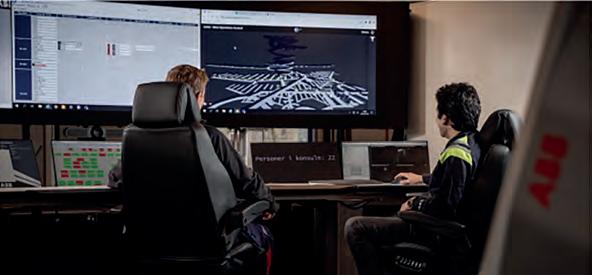
UPDATE ON PROGRESS IN KONSULN TEST-MINE
Development of the Konsuln test-mine has progressed strongly in the last year. LKAB’s own development contractor LKAB Berg och Betong tunnelled at an average rate of 420m per month. All three new levels (436L, 486L and 536L) have been made ready for production, and testing of the new 40m stopes started in March at the southern end of 436L. The current spacing between sub-levels in Kiruna and Malmberget mines is 30m. Konsuln 436 Level will test sub-level caving stopes at 40m spacing, and 486 and 536 Levels will test sub-level caving stopes at 50m spacing. This test if successful has great cost benefits due to the greater amount of ore that can be extracted per metre of access development. Another exciting new development has been the start of a new ramp to surface from 436L. This tunnel will be approximately 2.5km long, and combined with associated upgrades in the ventilation network will provide a new tramming route to surface for the high tonnages from the new levels. Additionally it will give an excellent test-track for battery electric trucks and automation systems.
The Konsuln Mine Operations Control (Photo Fredrik Alm).
EPIROC BATTERY ELECTRIC VEHICLES
An order has been placed with Epiroc for the delivery of two MT42 batterypowered trucks with a design payload of 42 tonnes, and for an ST14 battery-powered LHD with a bucket design for 14 tonnes. The first truck will be delivered this autumn, and the second truck and the LHD in the beginning of 2022. These machines will be put through their paces on a surface track at Konsuln first, and will then move underground as part of the production fleet, enabling the testing both of the machines’ performance and also the new footwall infrastructure layout. AUTOMATED LHDS
In the main Kiruna Mine work is ongoing to develop automated control of both Epiroc and Sandvik LHDs. On 1365L a control room overviews the performance of two Epiroc ST18 diesel loaders, and five Sandvik LH621 diesel loaders. At the moment the two types of machine are working in separate production areas, but one of the aims of the project is to be able to run machines from different vendors in the same area. This is known as collaborative autonomy. The project is developing a system called LOMI (LKAB Open Mine Integrator) that will enable this. UPDATE OF PROGRESS IN THE TEST-MINE OFFICES
The project offices at the entrance to the Konsuln test-mine have been further developed. In addition to the Mine Operations Control and the Virtual Mine Lab, additional offices, conference facilities and a new ‘fika’ room for communal dining and informal meeting have been added, (all following current Covid 19 guidelines). Also, a second floor has been built, which will give facilities for visualising the mine in 3-D on large screens. The Mine Operations Control has been equipped with the latest control room equipment from ABB, one of the Alliance partners. The Extended Operator Workplace is the centre-piece, and a Collaboration Table has also been installed. The Collaboration Table is a very flexible unit that is used for round-table discussions, displays of multiple layers of information and 3-D models. It can also be used for crew-briefings. Traditional mine control rooms are well established around the mining world. This particular Mine Operations Control is a concept of a distributed way of working
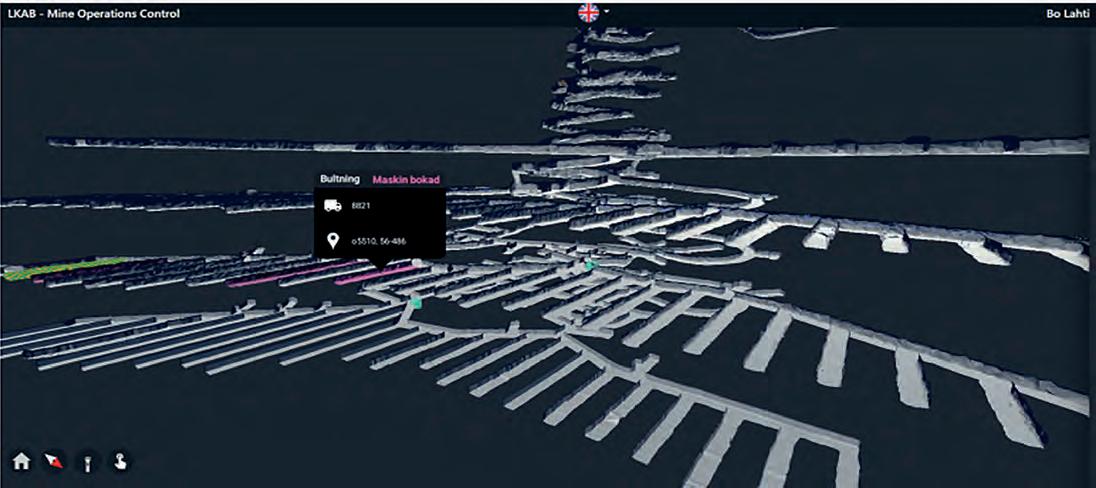
ABOUT LKAB
SPOT underground in Kiruna Mine. (Photo LKAB).
as well as a physical space. The mine plan is visible to everyone in the mine, in the offices, and in remote locations in real time, enabling enhanced decision making. The right information gets to the right people at the right time. In this way the operation becomes more productive and efficient. In the Virtual Mine Laboratory the team are developing a simulated model of the Konsuln Mine. This model, known as SMITE (Simulated Mining Ideas Test Environment) is a 3-D model of the mine based on the mined excavations, but with many other layers of information including the status of electrical power, ventilation, drilling water and dirty water pumping, and communications and positioning networks. The function of the Virtual Mine Laboratory is to provide ‘what-if’ simulation power to the Mine Operations Control, thereby enhancing decision making and the ability to follow the mine plan. It will also provide support during the management of emergency scenarios. SPOT
One other exciting development is the deployment of ’Spot’ in our mines Boston Dynamics are the manufacturers, and they describe Spot as ‘an agile mobile robot that navigates terrain with unprecedented mobility, allowing you to automate routine inspection tasks and data capture safely, accurately, and frequently’. The robot is similar to a dog, with four legs and can be used to inspect areas that are inaccessible for humans, for example active seismic zones in the mine, or an irrespirable atmosphere due to fire. Spot can carry up to 14 kilos on its back, and one option is to bring a drone to fly further forward to inspect otherwise inaccessible areas in the mine. This creates a better and safer work environment for our co-workers, with great potential for mine safety and mine rescue work. COVID-19
Following strict guidelines from LKAB momentum in the project has been maintained, and new ways of work have evolved. As restrictions ease and as travel and physical meetings become possible once more, an exciting fourth year in the project beckons! LATEST NEWS
On Thursday 9 September, LKAB opened the mine gates in Kiruna for His Majesty Carl XVI Gustaf, King of Sweden, who together with the Queen is hosting a state visit by German Federal President Frank-Walter Steinmeier and Ms Elke Büdenbender. One of the purposes of the state visit is to stimulate in-depth collaborations in areas such as climate, energy and digitalisation - with a focus on innovative and sustainable solutions. LKAB, which is leading the transition of the mining industry towards a sustainable future, was one of the stops at the journey through Sweden. “If we are to be able to meet the climate threat, a gigantic change in the industry’s value chains is required. Our industry, the iron and steel industry, alone accounts for seven percent of global emissions, while what we produce is crucial for the entire society. The theme for the visit has been about how we, together with others, can realize this and the critical minerals and metals required for Europe’s community building”, says Jan Moström, LKAB’s President and CEO. “It is not without a certain pride that we notice the interest and commitment to the gigantic plans that LKAB has for a complete restructuring of our entire production. A conversion that will be able to help our customers in the European steel industry with their conversion and cut carbon dioxide emissions corresponding to two thirds of Sweden’s total emissions. Earlier this year, we showed that the HYBRIT technology that we developed together with SSAB and Vattenfall to make sponge iron with hydrogen works”, says Jan Moström.
LKAB’s mines and refining plants are located in Malmfälten in the north of Sweden. Production operations are principally located in Kiruna, Malmberget and Svappavaara. Luossavaara-Kiirunavaara AB (publ), which is abbreviated to LKAB, is an international mining and minerals group that offers sustainable iron ore, minerals and special products. We are committed to developing carbon-free processes and products by 2045, leading the transformation of the iron and steel industry. We are one of Sweden’s oldest industrial companies and are wholly owned by the Swedish state. Since 1890 we have developed through unique innovations and technological solutions and are driven forward by more than 4,500 employees in 12 countries. In 2020, the LKAB group had sales of about SEK 34 billion. Sustainability is the core of our business, and our ambition is to be one of the most innovative, resource efficient and responsible mining companies in the sector. We manufacture and supply highly processed iron ore products to the global steel market. The majority of our iron ore products are sold to European steelworks. Other important markets are the Middle East, North Africa, Asia and the USA. www.lkab.com
